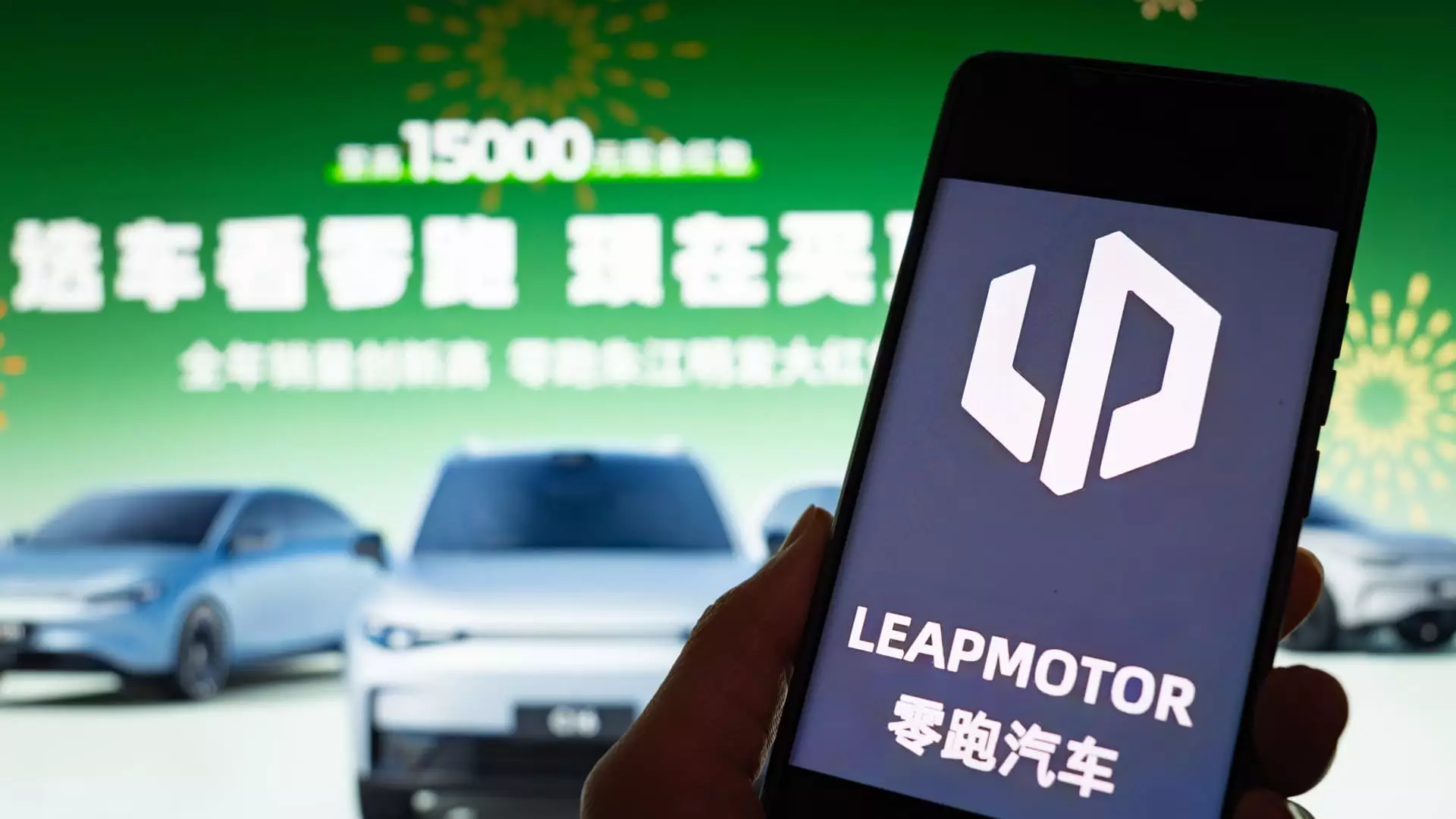In the ever-evolving world of electric vehicles (EVs), China’s market is experiencing a seismic shift that reveals both opportunities and challenges. Major players like Leapmotor and Aito are making headlines with astounding sales figures, indicating a strong recovery from the pandemic’s disruptions. Leapmotor, bolstered by backing from Stellantis, reported an eye-popping growth of 148% year-on-year, with May deliveries hitting 45,067 vehicles. This surge can be partly attributed to the launch of their revamped C10 SUV, which is both affordable and stylish, captivating a market eager for innovation and value.
At the same time, Aito, utilizing tech from Huawei, announced that it had successfully delivered 44,454 vehicles in May, a record-breaking figure for the automaker. The impressive launch of the Maextro S800, touted as an ultra-luxury sedan priced at a staggering 708,000 yuan (approximately $100,000), showcases how electric cars are not just for the budget-conscious consumer anymore but are also appealing to the affluent market.
The Price War: A Double-Edged Sword
As these new entrants strive to dominate the electric vehicle landscape, the reins are increasingly tightening for older firms, including the industry trailblazer BYD. Despite maintaining a stronghold with a total of 376,930 cars sold in May, BYD’s aggressive price cuts—reducing Model Seagull prices by 20%—spark criticism and concern. The risk is palpable: this price-cutting frenzy could resemble the downward spiral seen in the real estate sector after the Evergrande crisis, marking an inflection point that may lead to dire consequences for the industry at large.
Moreover, the narrative around BYD is convoluted; the accusations regarding dealer pressure regarding cash flow issues add a layer of complexity to an already competitive scenario. The perception of an impending crisis— exacerbated by rising fears of financial instability—could undermine consumer confidence and complicate future sales.
The Rise and Fall of Startups
Unlike the meteoric rise of Leapmotor and Aito, some noteworthy startups are caught in a bind. Xpeng’s deliveries dipped slightly to 33,525, even though they reported a staggering 230% year-on-year growth. While they maintain the impressive streak of delivering over 30,000 vehicles for the seventh consecutive month, the decline might indicate a saturation point in their sales effort, hinting that even high growth rates cannot shield from potential downturns.
Meanwhile, companies like Li Auto and Zeekr appear to be moving at a snail’s pace, with moderate year-on-year growth figures—16.7% and 1.6%, respectively. Despite the launch of innovative driver-assistance technologies in an attempt to set themselves apart, Zeekr’s short-sightedness on broader market needs may limit its potential. Meanwhile, Nio, once a darling of the EV sector, saw deliveries slip, underscoring the competitive pressure that is reshaping the marketplace.
An Expanding Horizon: New Markets and Diversification
In this climate of cutthroat competition, many automakers are looking beyond China’s borders, seeking opportunities in emerging markets such as Africa. The EU and U.S. tariffs on the imports of Chinese EVs present serious hurdles to entering Western markets, forcing companies to think outside the box. For example, BYD’s announcement of its collaboration with CFAO Mobility to expand into Benin reflects an innovative approach to diversification.
As these automakers navigate through international regulatory challenges and work to cater to diverse market needs, their ability to pivot effectively will be crucial. This can lead to an innovative re-engineering of not just products but also strategies that address local consumer preferences and logistical considerations.
In this sea of change, the overarching narrative of the EV market in China is not just about numbers but encapsulates a complex dynamic of aspirations, risks, and transformations. While some players thrive, others must sharpen their strategies or risk becoming obsolete in this rapidly evolving landscape.

